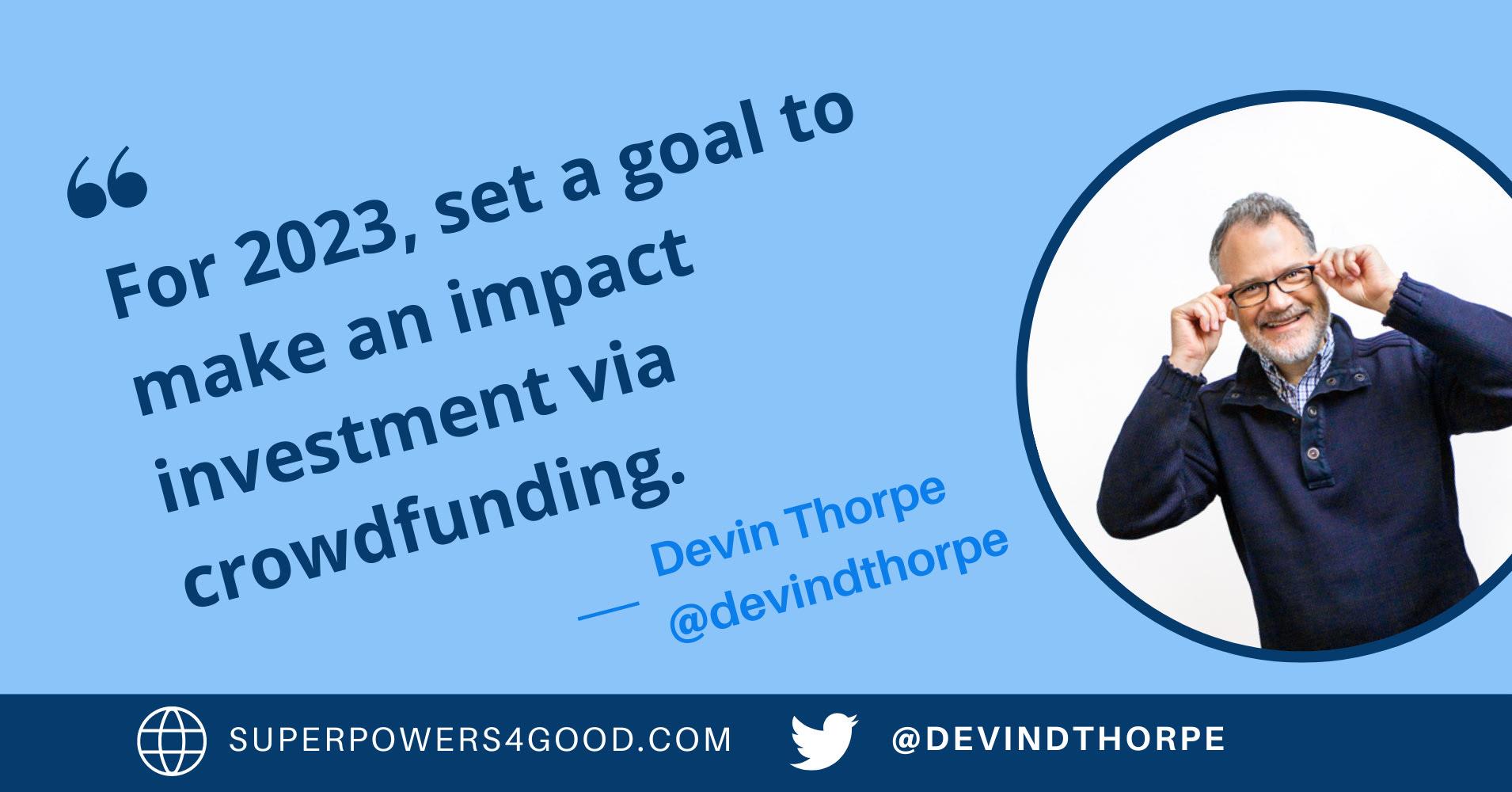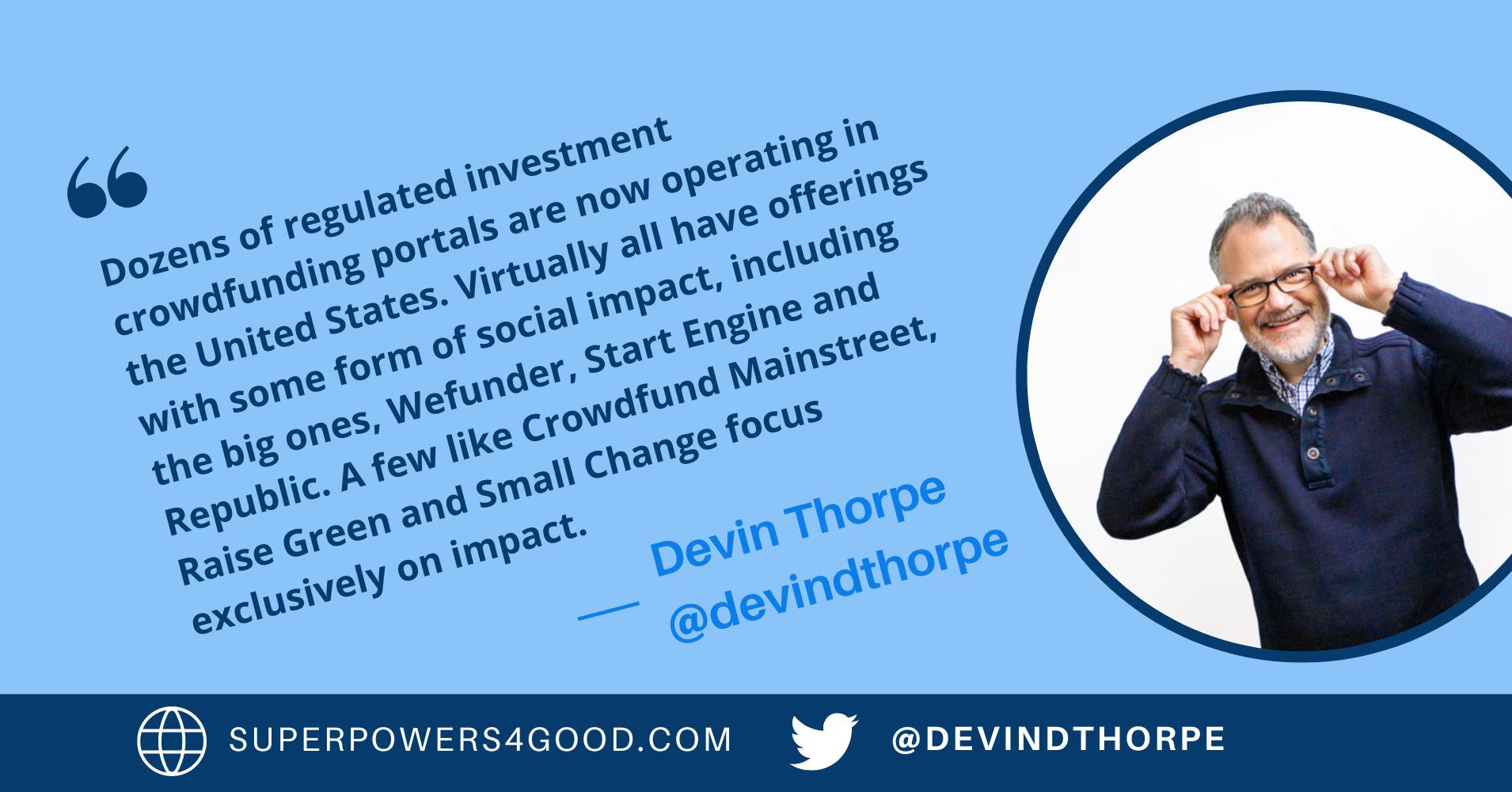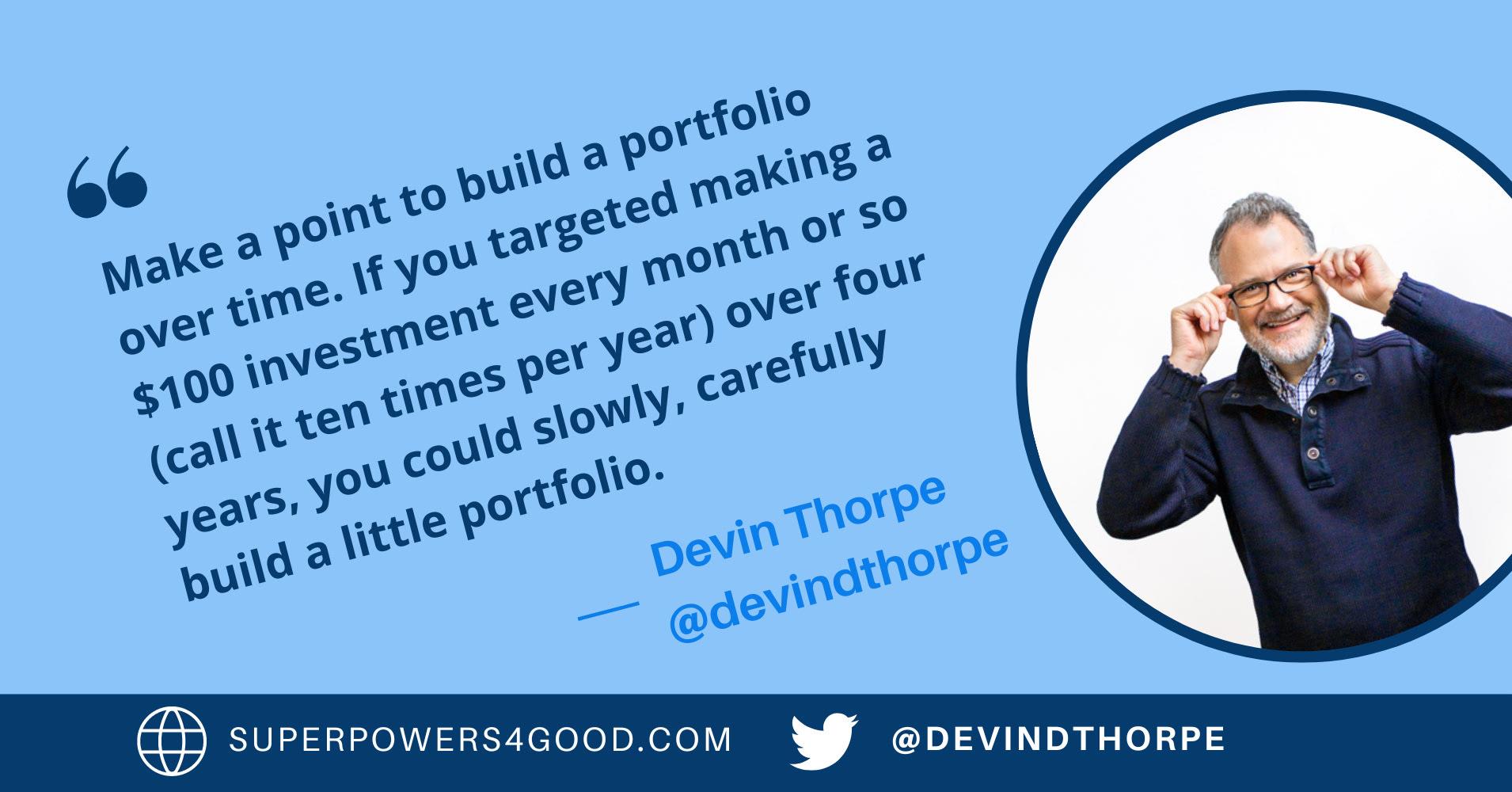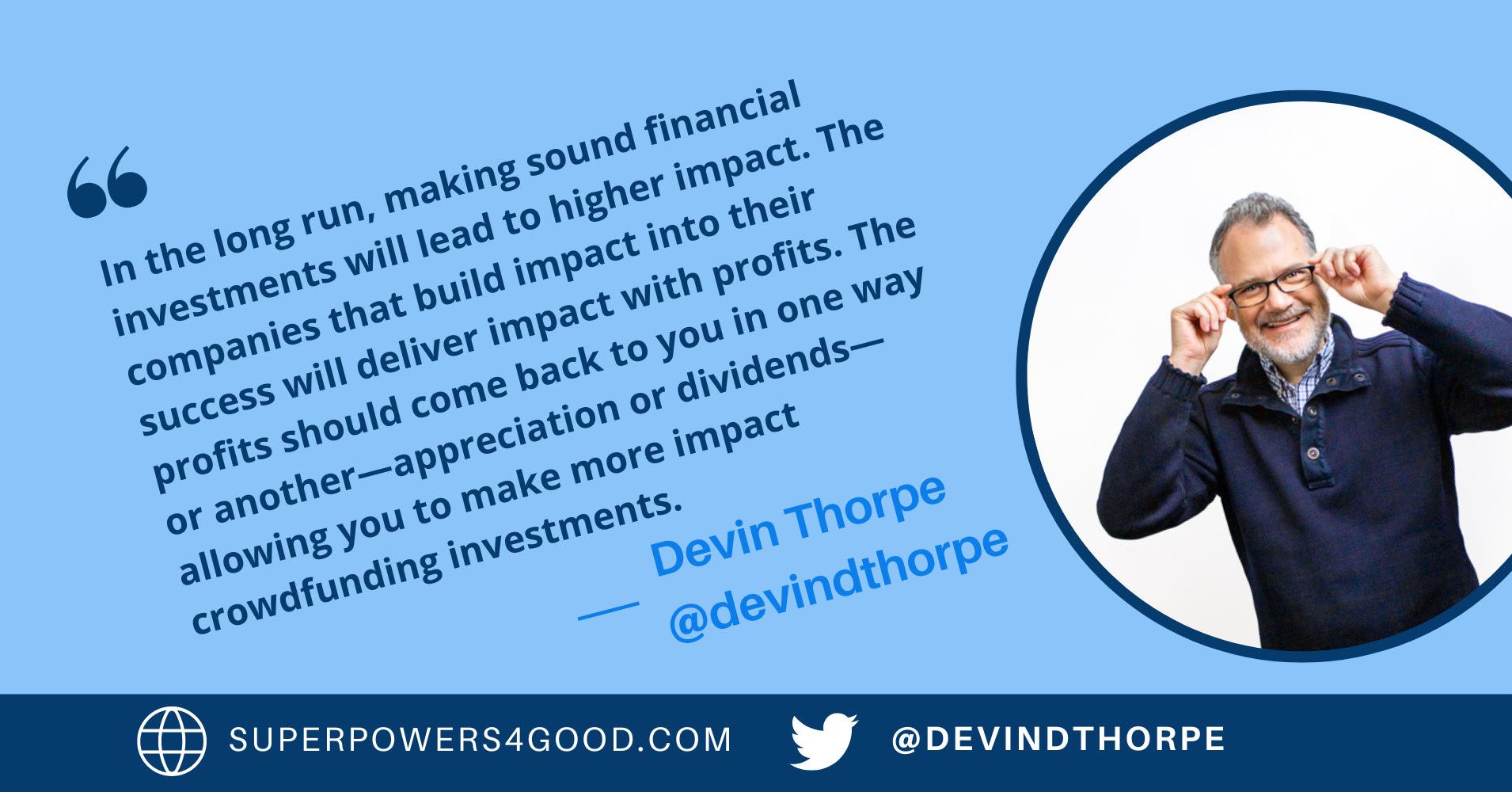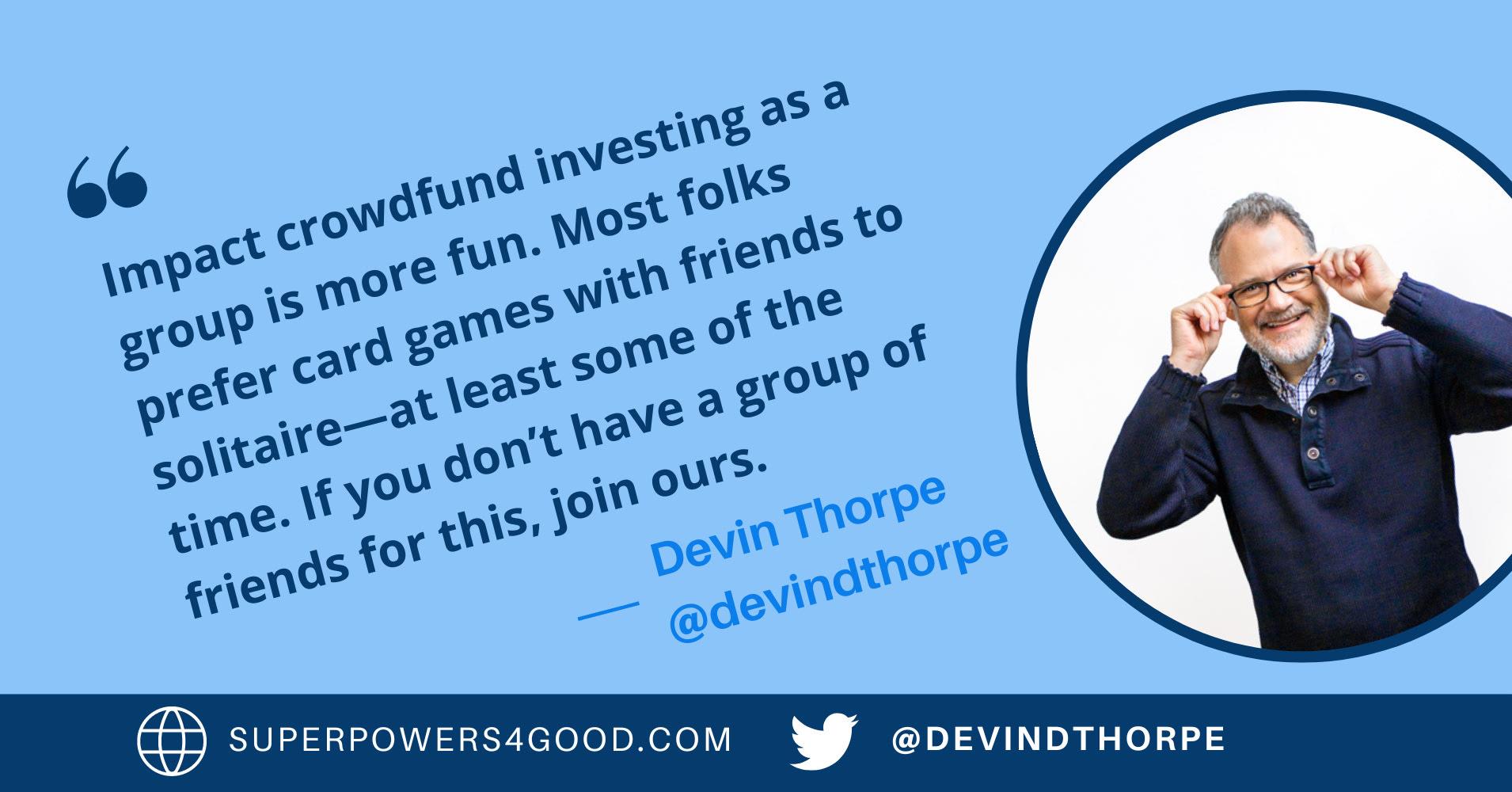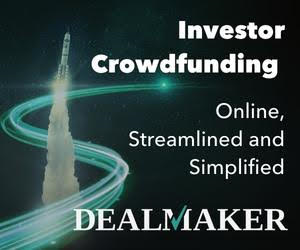There has been no shortage of articles about new year’s resolutions. I’d be reluctant to join the chorus if this one didn’t have the potential to yield so much good for so little effort.
Many people recommend focusing your 2023 goals on a single objective. If you’re struggling to find one, look no further! This one is easy.
If you are taking a portfolio approach to your self-improvement this year, here’s an idea that will be easy to add into the mix as it will take less time and money than most.
For 2023, set a goal to make an impact investment via crowdfunding.
To be clear, I’m not talking about donating to charity or helping someone in need on GoFundMe. Those are good and noble things to do, but I’m talking about something similarly easy but fundamentally different.
The biggest difference is that you could get your money back—with interest!
Mindset
The biggest challenge to making your first investment is your mindset. For about 90 years following the Great Depression, securities laws in the U.S. made it difficult for companies to sell shares to ordinary investors. As a result, lawyers, financial advisors, corporate executives, policymakers, the media—everyone—concluded that ordinary investors aren’t smart enough to make direct investments in startups and small businesses.
Here’s the thing. You are smart enough. Wealth is not closely correlated with intelligence. Wealth is more closely correlated with the wealth of one’s parents. Are there some things to learn about investing wisely? Absolutely. Are you capable of learning them? Positively.
Over a million people have done it!
Start working on this goal right now by saying out loud, “I’m smart enough to invest wisely.”
Process:
Investing in a startup via a regulated investment crowdfunding website is only a shade trickier than setting up an account on a new online retail website. How many times have you done that? How many passwords are you tracking in your browser, on a pad of paper next to your computer, or with password-tracking software like LastPass? (I have 80 passwords in my LastPass.)
If you can set up an account with Spotify, Apple Pay or Google Play, you can set up an investment account on a crowdfunding site.
Dozens of regulated investment crowdfunding portals are now operating in the United States. Virtually all have offerings with some form of social impact, including the big ones, Wefunder, Start Engine and Republic. A few like Crowdfund Mainstreet, Raise Green and Small Change focus exclusively on impact.
You don’t need to pick a portal before you select an investment. You can, but KingsCrowd offers a search tool I’ve learned to love. KingsCrowd aggregates data on all the current crowdfunding offerings, allowing you to screen investment candidates efficiently.
Each offering listed is just two clicks from the company’s page on its chosen crowdfunding portal, where you can get all the details about the company.
Once you find an investment that interests you, set up an account on the portal offering the investment. Then, make the investment just the way you would buy shoes.
To be clear, this isn’t investment advice. Only the most sophisticated, experienced investors should consider putting sizeable amounts to work in private offerings like these. I would encourage you to think about impact crowdfund investing as something between and distinct from your charitable giving and investing. Consider it a hobby or education. Talk to your financial advisor.
Scale:
Massive funds like the Harvard endowment fund or the California Public Employees Retirement System (CalPERS) allocate only relatively small proportions of their funds to a well-diversified portfolio of private company investments made through venture and private equity funds.
Among other takeaways, this suggests that private company investing of this sort should make up a tiny portion of your total assets.
Hypothetically, let’s assume you own a median-priced home with $100,000 of equity and a 401k with $100,000 as your primary assets, suggesting a net worth of around $200,000.
If you were to allocate 2 percent of your hypothetical wealth to your impact investing portfolio, you could assign $4,000 to it.
Don’t put all that money to work in one company. No matter how promising it may seem, it would be too risky. Most offerings won’t yield big returns and many will fail.
Instead, make a point to build a portfolio over time. If you targeted making a $100 investment every month or so (call it ten times per year) over four years, you could slowly, carefully build a little portfolio.
If you’re taking small bites like this, you may reasonably conclude you don’t have to spend hours analyzing every investment. Spend only as much time as you would choosing between two competing consumer goods priced at $100—work at it while you’re having fun, then stop reading and invest.
Remember, no matter how scary or intimidating this may feel, making one investment this way could radically change your perspective. Every portfolio begins with one investment. Many of us who do this find it genuinely fun to play venture capitalist for an hour!
Impact
There are lots of ways to have social impact. You choose!
For my part, I focus on three areas:
- Climate change and the environment
- Poverty and social justice
- Global health
You can focus on other areas. For instance, you may want to back companies started and led by veterans. That can be your thing. Whatever change fires you up, you can find companies working to address them.
To be clear, the big portals are full of offerings I ignore because they don’t have an impact I value. These include companies launching small-scale breweries and distilleries, video games and enterprise software. They could make terrific investments, but I don’t appreciate the social impact.
What I value shouldn’t matter to you. I share it only to make the point that you can choose your impact. You can emphasize social impact over financial considerations or vice versa. You can still have a social impact while prioritizing financial considerations.
In the long run, making sound financial investments will lead to higher impact. The companies that build impact into their success will deliver impact with profits. The profits should come back to you in one way or another—appreciation or dividends—allowing you to make more impact crowdfunding investments.
Just remember, impact matters.
Do It With Friends
Anyone can make impact crowdfunding investments. You’ll have more fun if you do it with others. If you have a life partner, that’s a great place to start. You may want to organize a little group of friends to share in the tasks of doing research and making smart investments.
Last year, I organized the Impact Cherub Club (think of small angel investors focused on having impact). We genuinely have fun. You’re welcome to join. We meet on the third Tuesday of each month at 1:00 Eastern. Register for free here.
Impact crowdfund investing as a group is more fun. Most folks prefer card games with friends to solitaire—at least some of the time. If you don’t have a group of friends for this, join ours.
On May 10-11, we’re hosting SuperCrowd23, a virtual conference for people who want to learn more about investing or raising money for good via crowdfunding. Register at half-off the super early bird pricing now.
Whether it is your one goal for 2023 or one you add to a long list, join me in making impact crowdfund investing part of your year.
Register for FREE to comment or continue reading this article. Already registered? Login here.
2

